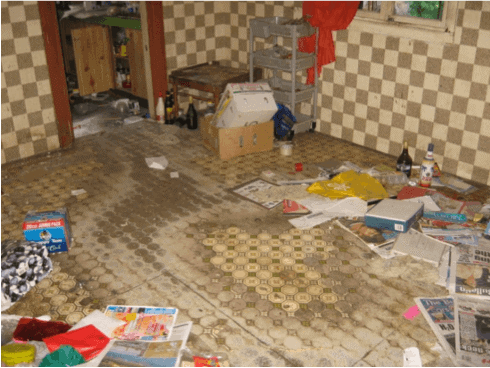
Very poor condition asbestos felt backed vinyl floor covering.
In our previous blog posts, we’ve talked about the risk of asbestos exposure in our own homes. Asbestos was used during the construction of two thirds of all Australian houses. But did you know that one of the most hazardous forms of asbestos in the home is in floor coverings? Not many people know asbestos was used in their floors, making it all the more dangerous.
Asbestos was used in all sorts of floor coverings prior to 1990, including vinyl floor tiles, the fibrous felt beneath vinyl floor sheeting, and the adhesive/grout used to fix vinyl or vinyl tiles to a surface.
When used in vinyl floor tiles, asbestos is often contained in a stable matrix in the vinyl body of the tile. Because it has little wear, it normally does not give rise to fibre release of a level considered to pose a significant health risk.
Asbestos adhesive or putty is sometimes used to coat the back of vinyl tiles or sheet. This does not usually pose a risk to exposure from airborne fibres, so long as it is not disturbed or worked upon.
However – and this is a BIG however – a health risk may arise quickly when maintenance work is performed on floor coverings that contain asbestos, for example high speed grinding or sanding, which may release the asbestos fibres and cause them to become airborne.
Unfortunately, the recent popularity of home renovation TV shows has promoted the idea of self-renovators ripping their vinyl floor coverings themselves, and sanding their floors. The vinyl usually tears, leaving the asbestos attached to the floor. When sanded, it becomes airborne in the dust, which is extremely dangerous.
If your home was built before 1990 and you want to rip up the old flooring, always first get a sample analysed for asbestos. The cost and time is minimal compared to the potential cost to your health (and that of your family).
To help you understand and identify the different uses of asbestos in flooring, our book Identifying Asbestos in Your Home includes numerous pictures of asbestos flooring.
